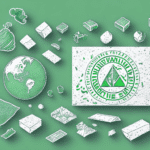The Benefits of Using Recycled Packaging Materials
In today's world, businesses face increasing pressure to adopt environmentally sustainable practices. One of the most effective ways to achieve this is through the use of recycled packaging materials. These materials are made from waste that has been recovered and transformed into new products, significantly reducing the amount of waste that ends up in landfills. This article explores the benefits of using recycled packaging materials, their environmental impact, and their growing importance in sustainable business practices.
Understanding Recycled Packaging Materials
Types of Recycled Materials
Recycled packaging materials come from various waste streams, including post-consumer and pre-consumer sources. Post-consumer recycled materials are waste products generated by households and businesses, such as used paper, plastics, metals, and glass. Pre-consumer materials, on the other hand, are by-products from manufacturing processes, such as scrap metal from manufacturing plants or sawdust from timber mills.
The Recycling Process
The recycling process involves collecting, sorting, and processing waste materials to remove contaminants. Once cleaned, these materials are reprocessed and transformed into new packaging products, which can then replace virgin resources. This not only reduces waste but also conserves natural resources and lowers energy consumption.
Key Statistics
- According to the Environmental Protection Agency (EPA), recycling one ton of cardboard can save 46 gallons of oil and 17 trees.
- Recycling aluminum saves 90% of the energy required to produce it from raw materials.
Environmental Benefits of Recycled Packaging
Waste Reduction
Utilizing recycled packaging materials significantly decreases the volume of waste that ends up in landfills. Landfills are major sources of greenhouse gases, such as methane, which contribute to climate change.
Conservation of Resources
Recycling conserves essential natural resources like trees, water, and minerals. By reducing the demand for virgin materials, recycling helps preserve these resources for future generations.
Energy Efficiency
Producing packaging materials from recycled sources typically requires less energy compared to manufacturing from virgin materials. For example, recycling plastic saves up to 88% of the energy needed to produce new plastic.
Economic Benefits for Businesses
Cost Savings
Recycled packaging materials can lower costs associated with waste disposal and raw material procurement. Recycling is often more cost-effective than landfilling, providing significant savings for businesses.
Job Creation
The recycling industry creates numerous jobs in collection, sorting, processing, and transportation of materials. This not only boosts local economies but also supports sustainable development.
Enhanced Brand Image
Companies that use recycled packaging demonstrate a commitment to sustainability, which can enhance their reputation and attract environmentally conscious consumers. According to a Nielsen report, 73% of consumers say they would definitely or probably change their consumption habits to reduce their environmental impact.
Consumer Perception and Market Demand
Growing Consumer Awareness
Consumers are increasingly aware of the environmental impact of their purchasing decisions. They prefer products with sustainable packaging, influencing businesses to adopt recycled materials.
Willingness to Pay a Premium
Many consumers are willing to pay more for products packaged in recycled materials, providing businesses with an opportunity to increase profits while promoting sustainability.
Consumer Contributions
Consumers can support the use of recycled packaging by choosing products with eco-friendly packaging and properly disposing of waste. Their demand drives businesses to prioritize sustainable practices.
Innovations in Recycled Packaging Technology
Advanced Material Processing
Technological advancements have improved the efficiency and cost-effectiveness of recycling processes. Innovations such as chemical recycling and automated sorting systems enhance the quality of recycled materials.
Biodegradable and Compostable Materials
Developments in biodegradable plastics and compostable materials offer environmentally friendly alternatives to traditional packaging. These materials break down naturally, reducing environmental impact.
Nanotechnology and 3D Printing
Nanotechnology enhances the strength and durability of recycled packaging, making it suitable for a wider range of applications. Additionally, 3D printing using recycled materials allows for customized packaging solutions, reducing waste and improving efficiency.
Government Policies and Support
Regulatory Frameworks
Government policies play a crucial role in promoting the use of recycled packaging materials. Regulations that mandate recycling practices and set standards for recycled content encourage businesses to adopt sustainable packaging.
Incentives and Funding
Governments can provide tax incentives, grants, and subsidies to businesses that invest in recycling infrastructure and sustainable packaging solutions. This financial support helps mitigate the costs associated with transitioning to recycled materials.
Public Awareness Campaigns
Education and awareness campaigns led by governments can increase public understanding of the benefits of recycling, fostering a culture of sustainability and encouraging more responsible consumer behavior.
Challenges and Solutions in Implementing Recycled Packaging
Supply Chain Reliability
Ensuring a consistent supply of high-quality recycled materials is a major challenge. Businesses can address this by establishing long-term partnerships with reliable suppliers and investing in local recycling infrastructure.
Cost Considerations
While recycled materials can be cost-effective, initial investments in recycling processes may be high. Implementing efficient packaging designs and exploring government incentives can help offset these costs.
Operational Changes
Adopting recycled packaging often requires changes to existing operations and supply chains. Developing a comprehensive sustainability plan and involving all stakeholders can facilitate a smooth transition.
Future Outlook and Trends
Increasing Adoption Across Industries
The use of recycled packaging materials is expected to grow across various industries, driven by consumer demand and stricter environmental regulations.
Technological Advancements
Continued advancements in recycling technology will make processes more efficient and materials more versatile, further promoting the use of recycled packaging.
Circular Economy Integration
Integrating recycled packaging into a circular economy model, where materials are continuously reused and recycled, will enhance sustainability and reduce overall environmental impact.
Conclusion
The adoption of recycled packaging materials is a vital component of sustainable business practices. The environmental, economic, and social benefits are compelling reasons for businesses to embrace recycled packaging. By investing in recycled and biodegradable options, companies can reduce their carbon footprint, enhance their brand image, and contribute to a more sustainable future.
Advantages and Disadvantages of Different Recycled Packaging Materials
Paper-Based Packaging
Advantages: Biodegradable, easily recyclable, and has a well-established collection infrastructure.
Disadvantages: Requires significant amounts of water, energy, and tree pulp to produce.
Plastic-Based Packaging
Advantages: Lightweight, durable, and often recyclable.
Disadvantages: Production requires significant energy and oil, and plastics are not biodegradable.
Metal and Glass Packaging
Advantages: Highly recyclable and durable.
Disadvantages: Heavier than other materials, leading to higher transportation costs and emissions.
Biodegradable Materials
Advantages: Breaks down naturally, reducing environmental impact.
Disadvantages: May require specific conditions to biodegrade and can be more expensive to produce.
Businesses must carefully consider the advantages and disadvantages of each type of recycled material to align with their sustainability goals and minimize environmental impact.






















